Hide
Lincoln City Church History
hide
Hide
- During the Reign of Edward the Confessor, Lincoln was divided into 52 parishes. On 4 Sept. 1553, these were consolidated via a "deed of union" into just 15 parishes.
- The Cathedral of Lincoln (Cathedral of the Blessed Virgin Mary) is one of the largest sacred structures in England and is considered architecturally magnificent. Work was started on the structure in the late 11th century and was completed around 1324. Several renovations and modifications have ensued.
- Here is a front view of the Cathedral, showing the ornate stone work, taken by Ron Cole (who retains the copyright):
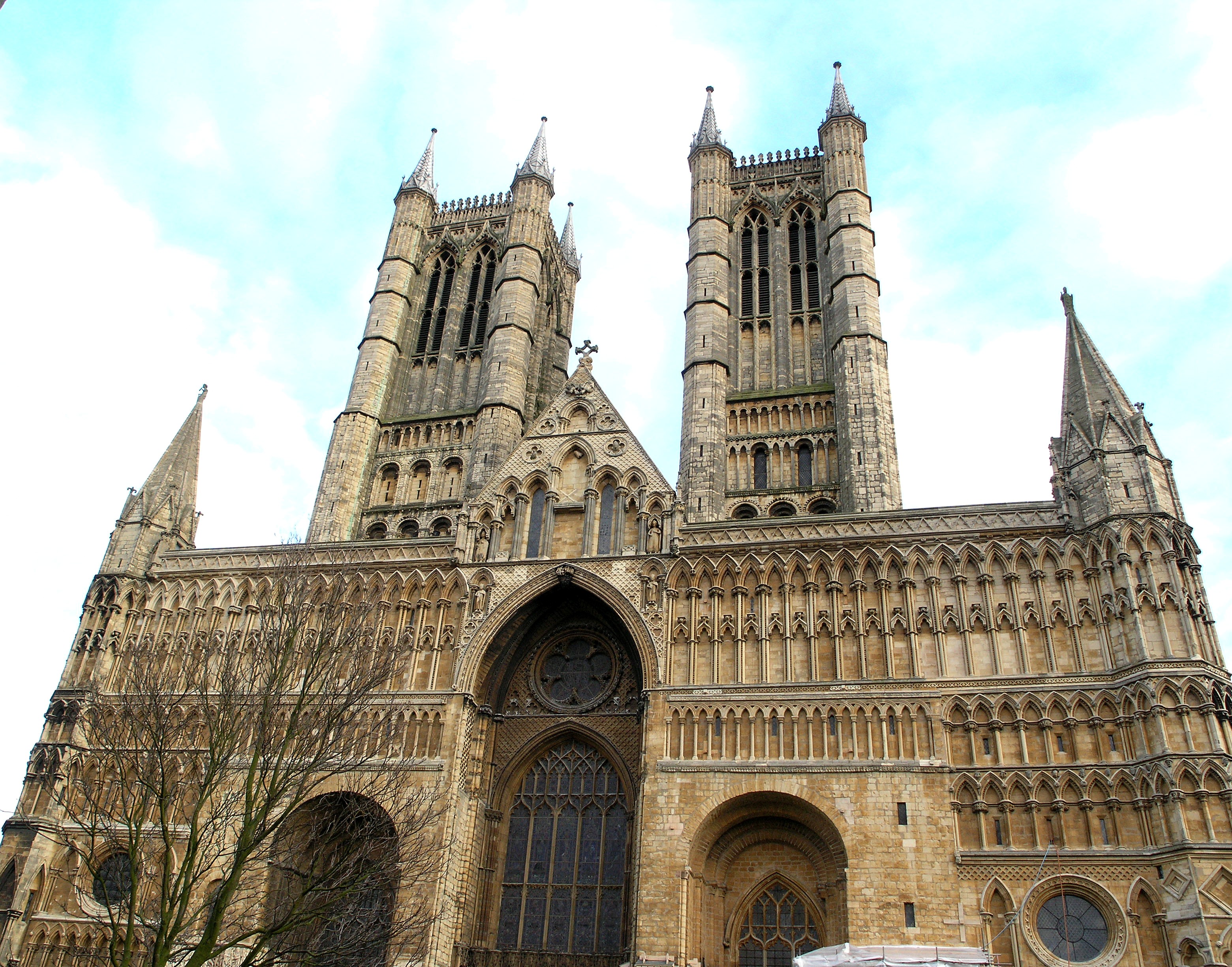
-
The ruins of an Episcopal Palace are on the slope of the hill south of the cathedral. The palace is believed to have been built between 1147 and 1167, with later additions and renovations.
- During the Reign of Henry VIII, who later dissolved the monastic houses in England, Lincoln had twelve monastic institutions, not counting the colleges and chantries. There were four hospitals, three priories and five friaries, nearly all founded in the 12th and 13th centuries. The location of most of these sites has been lost to history.
- Cantelupe, or Chantry House, in the Close near the Bishop's palace, is said to be the remains of Cantelupe College, founded in 1355.
- Monk's House is the ruins of a cell of St. Mary's Abbey at York, situated about a half a mile east of the Cathedral. Sources claim that this was the site of Icannoe where St. Botolph erected a monastary in 654.
- Jew's House is the former home of Belesat de Walingford who was hanged for clipping coin. Presented to the Dean of Lincoln, the building shows several interesting Norman architectural features.
The Lincoln Imp
The following story is provided by Michael, from Norway:
As many people are aware the Lincoln Imp sits in Lincoln Cathedral looking down. But in case you do not know the legend of The Lincoln Imp, well here it is.
Back in the 14th Century Satan sent his two little Imps out one day to do his evil work. First they went to Chesterfield where they sat on a church spire and began twisting, which is how Chesterfield's Crooked Spire came to be crooked.
After vandalising Chesterfield's spire the two little Imps headed east to Lincoln Cathedral. Upon their arrival they did as Satan had instructed them, causing as much mayhem as possible. They began by tripping up the Bishop and then went on to smash all the tables and chairs. It was whilst they were in the process of destroying the Angel Choir that an angel appeared and told them to stop at once. One of the Imps was braver than the other so he flew to sit on a stone pillar and began to throw heavy objects at the Angel. His punishment for his bad behaviour and defiance was to be immediately turned to stone by the Angel leaving the little imp sitting on the pillar forever.
Whilst this was happening the other imp was hiding amongst the broken tables hoping that the Angel would not see him and do the same to him. During the confusion the second imp seized his chance to escape from the cathedral and hitched a lift on a passing witch's broomstick (honest !). Unfortunately he was not as safe as he thought and in exchange for his safe passage from the cathedral the lonely witch turned him into a black cat for companionship. That is why all witches are portrayed with a black cat on their broomstick.
Since the Lincoln Imp is associated with the Devil many people believe that the Imp is bad luck. That though is untrue and is proved by the Imp's royal connections as in 1928 the then Prince Of Wales, later King Edward VIII was presented with a Lincoln Imp tie pin. The following year his gelding won The Grand National whilst his colt won The Epsom Derby.
Specific Parish Churches
There are photographs of many of these churches on the Wendy PARKINSON Church Photos web site.
- The Mission Church, Vernon Street, was built in 1893 in connection with St. Peter at Gowts.
- The church seats about 275.
- St. Andrew, was built in 1876-7 and incorporates some stone from the old St. Martin church. The parish was newly-formed on 21 Dec. 1883.
- The church seats about 600.
- The register dates from 1877.
- St. Benedict, High Street. Originally built by the Saxons, but replaced by a stone Norman structure. Not in use by 1873. In 1851 this parish was consolidated with St. Peter at Arches.
- The register dates from 1645.
- Here is a photo of St. Benedict's Church, taken by (and copyright of) Wendy PARKINSON:
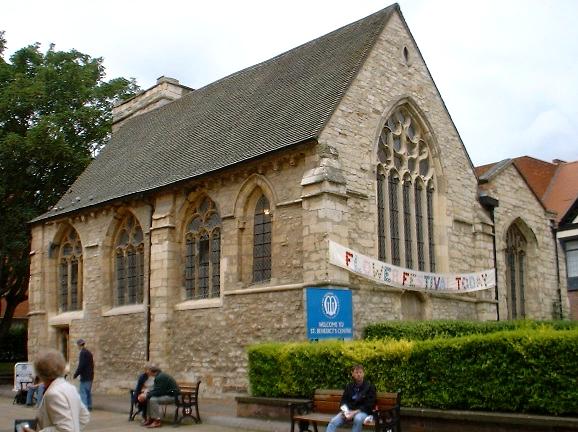
-
Here is a photo of the front of St. Benedict's Church, taken by Ron COLE (who retains the copyright):

-
St. Botolph, High Street. An earlier building was destroyed when the central tower fell down on Sunday evening, 6 August 1646 and remained in ruins until building commenced in 1721 and finished in 1723. It was enlarged and improved in 1878. - The register dates from 1561.
- The church seats about 350.
- Here is a photo of the front of St. Botolph's Church, taken by Ron COLE (who retains the copyright):
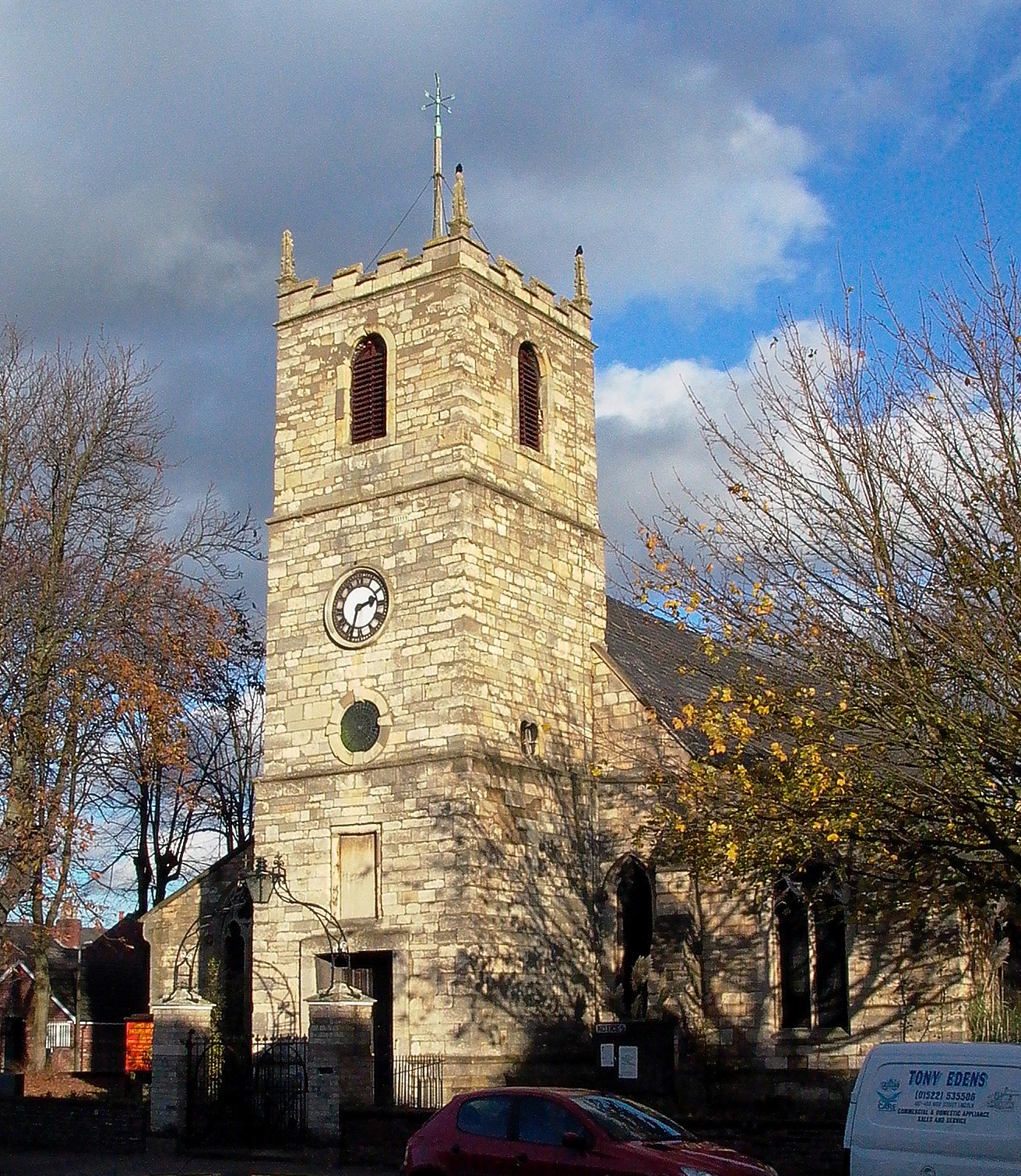
-
St. Faith, started out in 1884 as a boundary wall for a new churchyard. In 1885 an iron church which had stood in London, was taken apart and brought to Lincoln where it was dedicated in June, 1855.
- St. Faith, Charles Street West, was a chapel of ease to St. Mary-le-Wigford. It was rebuilt as a permanent building in 1894-1895, consecrated in October 1895 and the register starts in 1899. The church serves the west end of Lincoln city.
- The church seats about 600.
- Wendy PARKINSON has a photograph of St. Faith's Church on Geo-graph, taken in August, 2001.
- St. Giles has existed for centuries. On a 1610 map it is listed as St. Giles Hospital. On a 1722 map it is clearly on what we now call the Wragby Road.
- St. Giles, used to be St. Peter at Arches, but the later was moved to Shelley Drive in Lamb Gardens around 1933 to provide services to the new St. Giles housing estate and was redidicated.
- There are several photographs of St. Giles Church on the Flickr website.
- There appear to be no registers for St. Giles (at least not under that name).
- Richard CROFT has a photograph of St. Gile's Church on Geo-graph, taken in December 2005.
- Here is a photo of St. Giles Church, taken by Ron COLE (who retains the copyright):

-
St. John in Newport originally stood in the middle of the old Roman road. That building was partly taken down in 1546 and demolished in 1584. The present building was erected in 1840 to serve both St. John and St. Nicholas parishes. The church was renovated from 1879-90. It seats 470. The register of St. John dates from 1708 and that of St. Nicholas from 1736.
- Here is a photo of St. John and St. Nicholas Church, taken by Ron COLE (who retains the copyright):
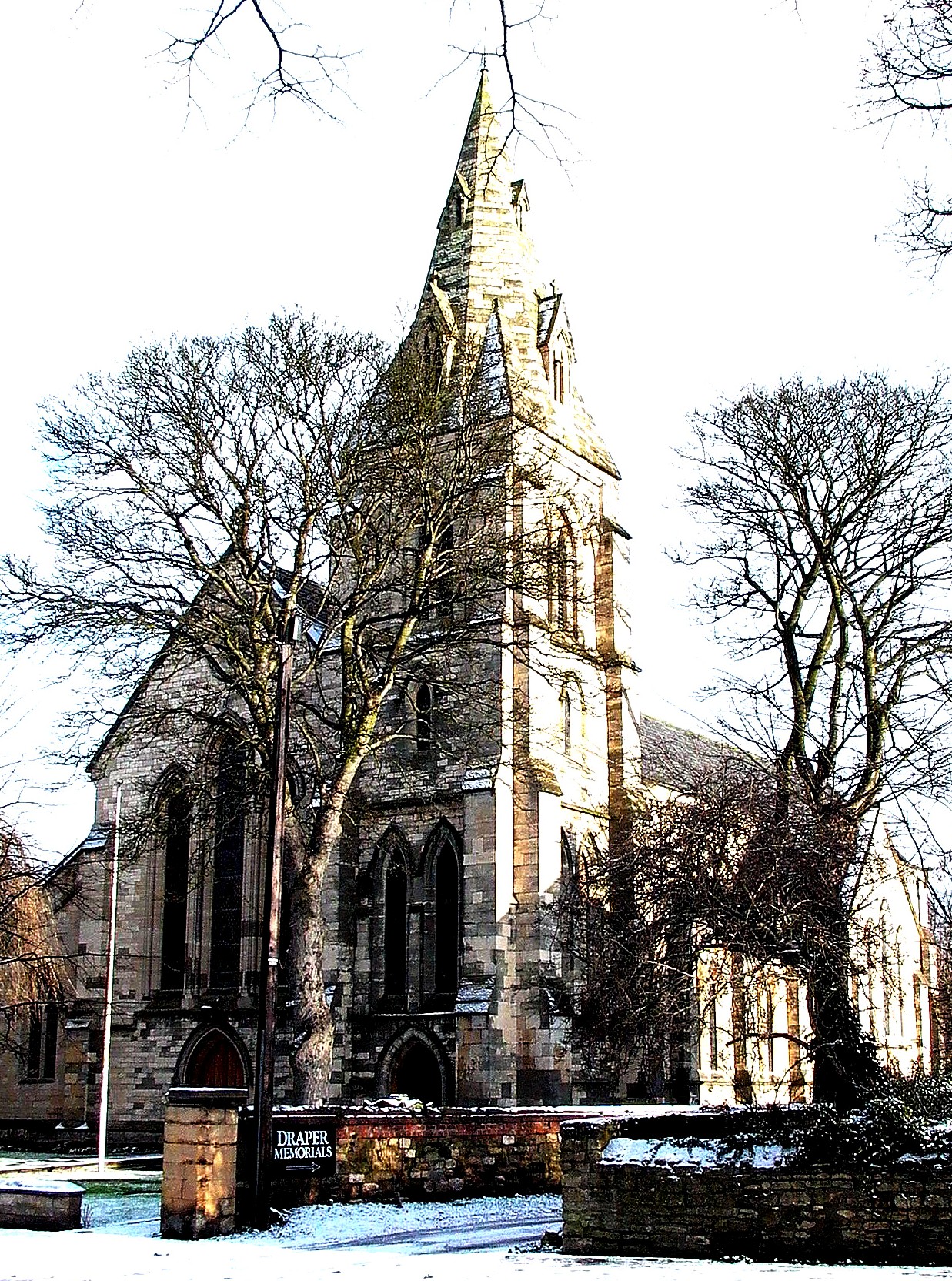
-
St. Margaret in the Close, north side of the cathedral.
- St. Mark, High Street. An ancient church which was in ruins in 1788, when some repairs were done to keep the building in use. It was rebuilt in 1871-2. It had a spire 120 feet tall, with a clock. Traces of Norman stonework were found in the building.
- The church seated about 350.
- The register dates from 1681.
- The church was demolished in 1971 and the site sold.
- St. Martin, described in early records as "St. Martin at Dernstall," claims to be one of the earliest churches in Lincoln as it is mentioned in William the Conqueror's charter for Lincoln Cathedral. The ancient building on St. Martin's Lane, between High Street and Hungate, was repaired and reopened in April 1809, but it was obvious that a replacement was needed. The new building was consecrated in 1873 on West Parade and seated about 800. In 1931, it was united with St. Peter at Arches, and the new chapel torn down in 1970. A Jobcentre now stands on the site.
- The register dates from 1548.[Tom Sylvester]
- There is a photograph of St. Martin's Church on the Wendy PARKINSON Lincoln CIty Church Photos web page.
- Richard CROFT has a photograph of the origianl churchyard on Geo-graph, taken in February, 2006.
- St. Mary le Wigford, High Street. Originally erected soon after the Norman Conquest by a citizen of Lincoln of Danish descent, named Colswegen. The current building seats about 390 people and the register dates from the year 1563. It is located in the centre of Lincoln, right next to the Railway station on St Marys Street. It is off the High Street just before the pedestrianised shopping area.
- Here is a photo of St. Mary le Wigford Church, taken by (and copyright of) Wendy PARKINSON:
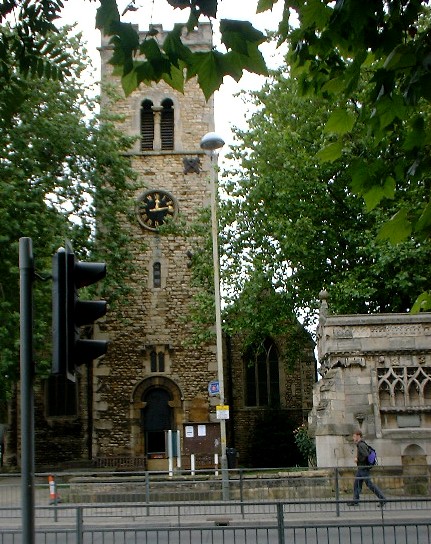
- >Here is a photo of St. Mary's le Wigford from the side, taken by Ron COLE (who retains the copyright):
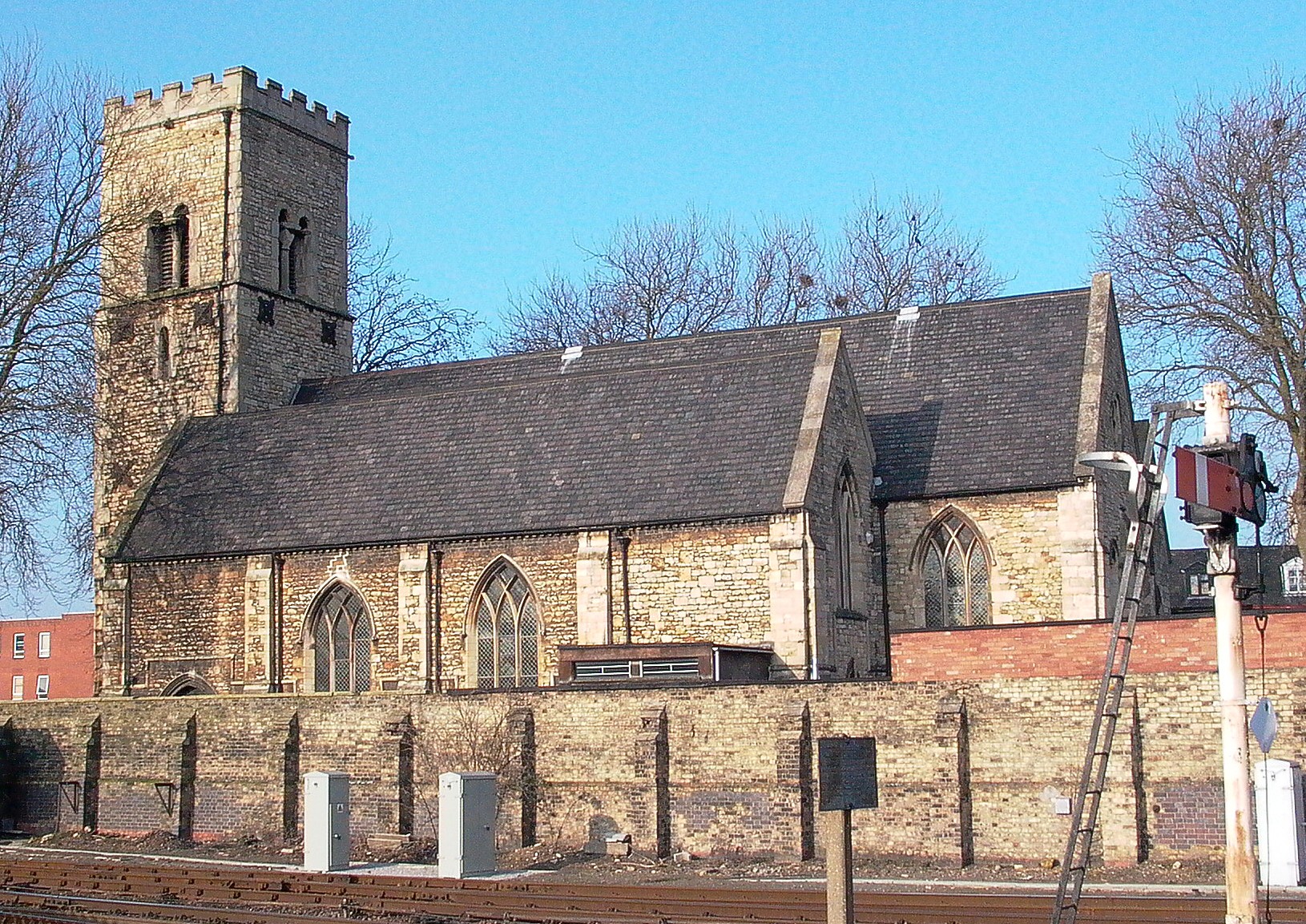
-
St. Mary Magdalen in the Bail, is another ancient church. The original was destroyed by Bishop Remigius to make room for the minster and a new church was erected about 1294. That building was damaged in the seige of 1643 and was rebuilt in 1695 and again in 1882.
- The church seats 230.
- The register dates from 1665.
- Here is a photo of St. Mary's Church, taken by Ron COLE (who retains the copyright):
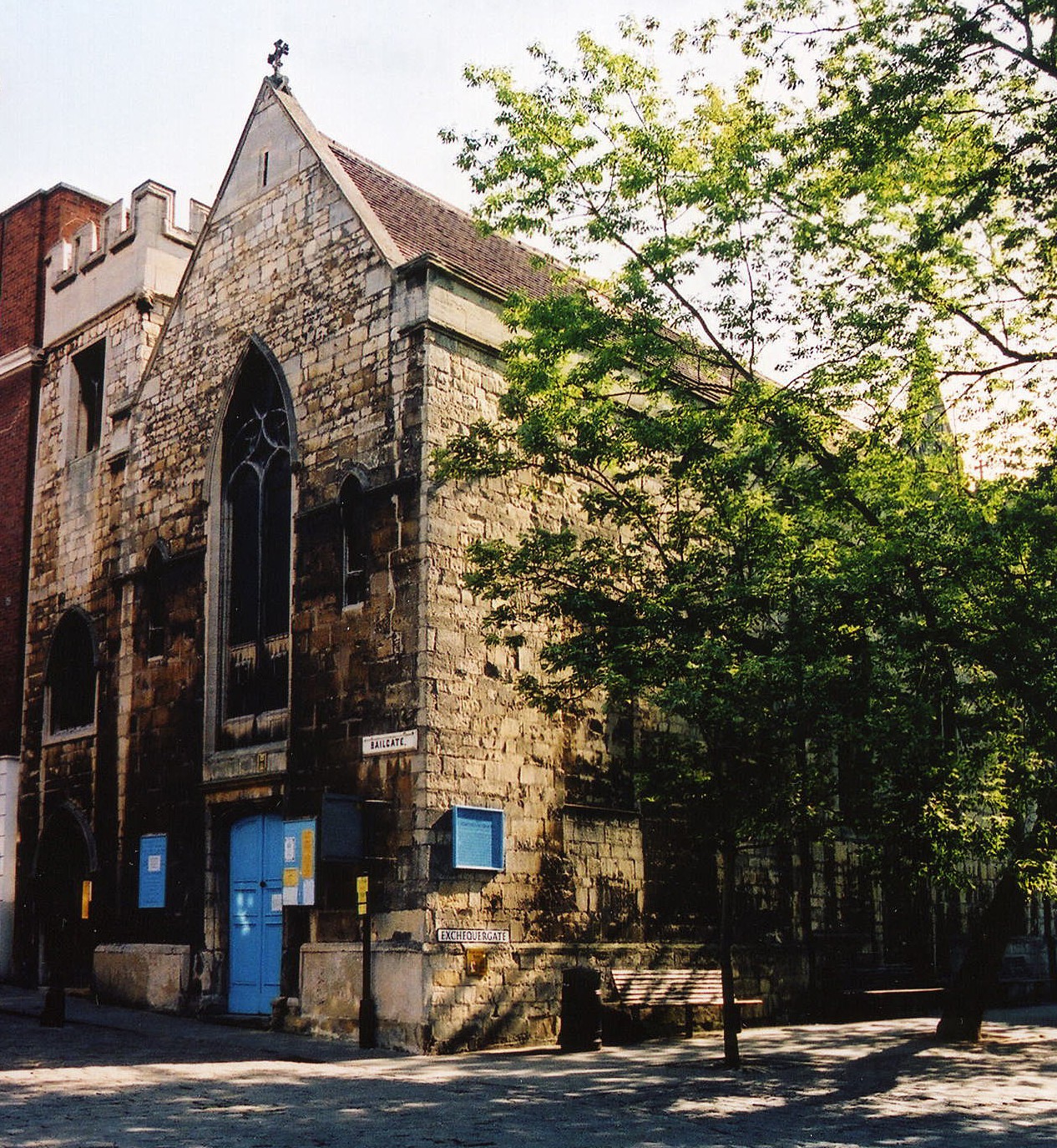
-
St. Matthias, Burton Road, was built in 1890-1 as a chapel of ease to St. Nicholas.
- The church seats about 500.
- Register status is unknown.
- St. Michael on the Mount has a long history in Lincoln. Its exposed position on the hill made it a target for Parliamentary artillery and it was battered down in 1643. Temporarily re-occupied, the church was abandoned from 1685 to 1744, when a new building was erected from the ruins. It was rebuilt again in 1853.
- The church seats 520.
- The church register dates from 1562.
- St. Michael on the Mount was declared redundant by the Diocese of Lincoln in July, 1998. The building was subsequently sold and used for cultural and educational purposes.
- Here is a photo of St. Michael on the Mount, taken by (and copyright of) Wendy PARKINSON:
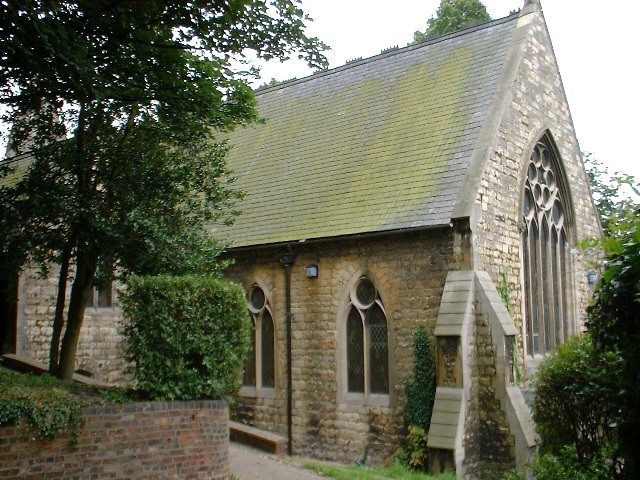
- St. Nicholas was an ancient church. Last rebuilt about 1280, it was so damaged in the Civil War that most of it was dismantled. Some traces may still be seen near the Roman Arch. See St. John in Newport for register dates.
- St. Paul in the Bail, Silver Street in Westgate, near the Mint Wall. Wholly rebuilt in 1877-8, it stands on the site of a church erected by Blecca, the Roman governor of the city who was baptized by St. Paulinus. That original church fell down in 1302 and was rebuilt at the cost of the parishners. It decayed again and was rebuilt in 1786.
- The church seats about 450.
- The register dates from 1694.
- The Diocese of Lincoln declared this church redundant in October, 1982. The building was gifted to be leased by the City Council for public use.
- St. Peter at Arches, Silver Street. Sometimes called "the Corporation Church". The church was built in 1724, the interior was repaired in 1867 and the whole church extensively restored in 1877-9. There were about 650 seats. The church was "in the way" of new development and was closed in 1929, It was scheduled to be demolished in 1933. Instead it was taken apart stone by stone and moved uphill with its organ, bells, furnishing and all, to serve as the new St. Giles parish church (See above).
- The register dates from 1561.
- St. Peter in Eastgate, or "St. Peter in Eastgate with St. Margaret's" had an earlier building that was dismantled in 1643. A replacement was built in 1778 and that building replaced again in 1870.
- The church seats 500.
- The register of St. Peter's dates back to 1662, St. Margaret's from 1538 and the consolidated parishes from 1781.
- Here is a photo of St. Peter Eastgate, taken by (and copyright of) Wendy PARKINSON:
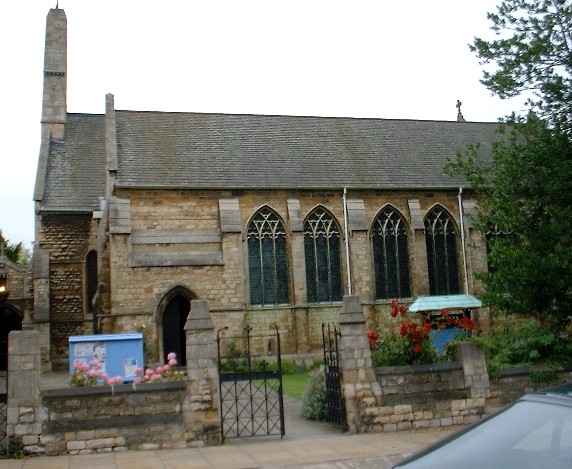
- Here is another photo of St. Peter's Church, taken by Ron COLE (who retains the copyright), capturing the building in sunlight:
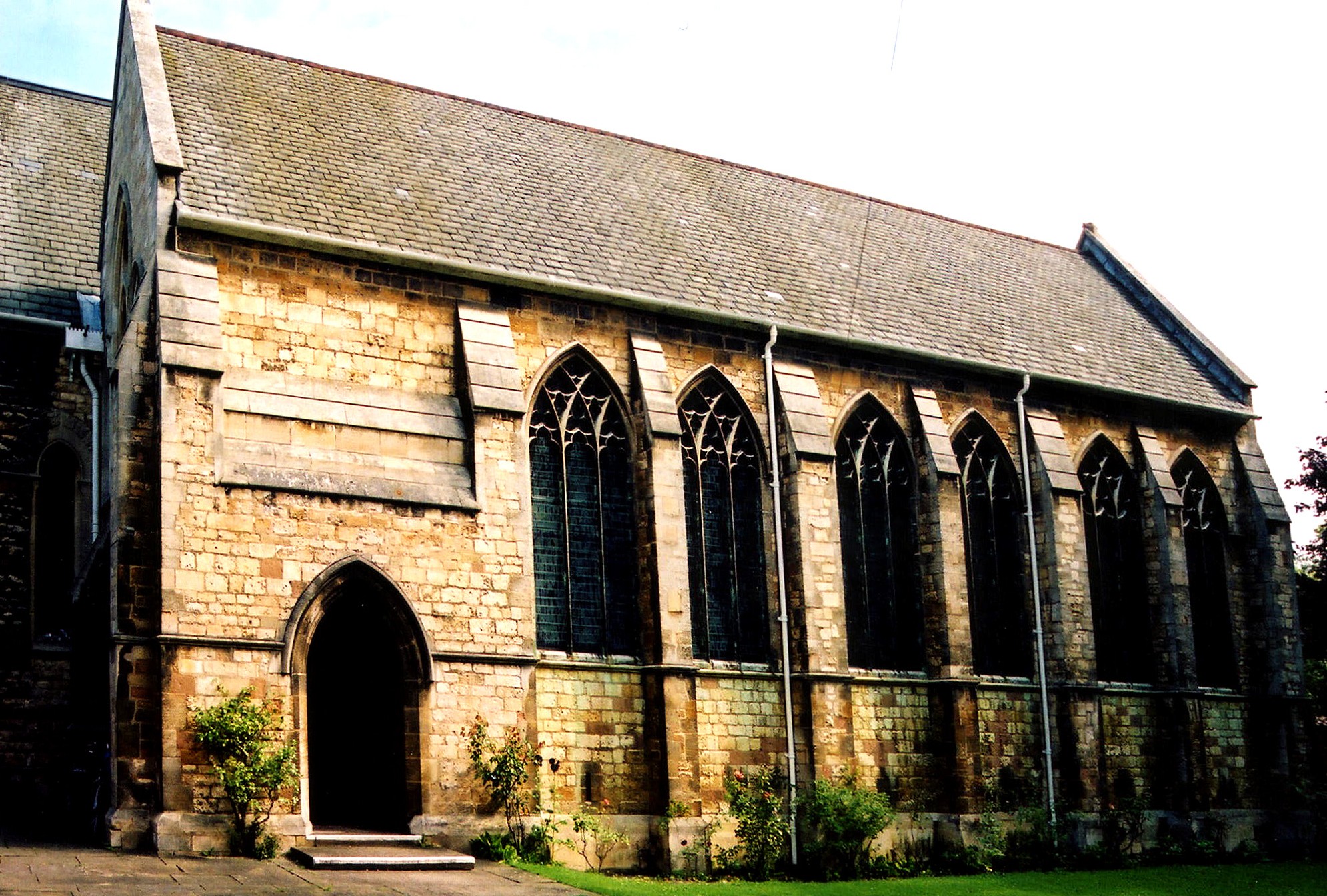
- St. Peter at Gowts, near Gowt's Bridge in High Street. The name derives from the gowts ("go outs") or watercourses nearby. The church includes a Norman tower, apparently from the original structure. The church was restored and enlarged in 1887.
- You may hear locals pronounce this as "St. Peter at Goats".
- There are 475 seats.
- The register of baptisms dates from 1540, marriages and burials from 1538.
- Here is a photo of St. Peter at Gowts, taken by (and copyright of) Wendy PARKINSON:
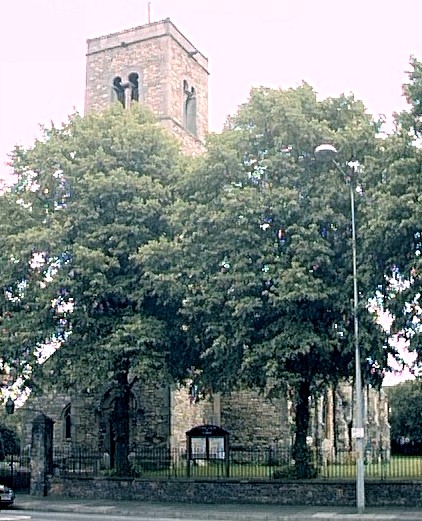
- Here is another photo of St. Peter's Church, taken by Ron COLE (who retains the copyright), showing more of the building:
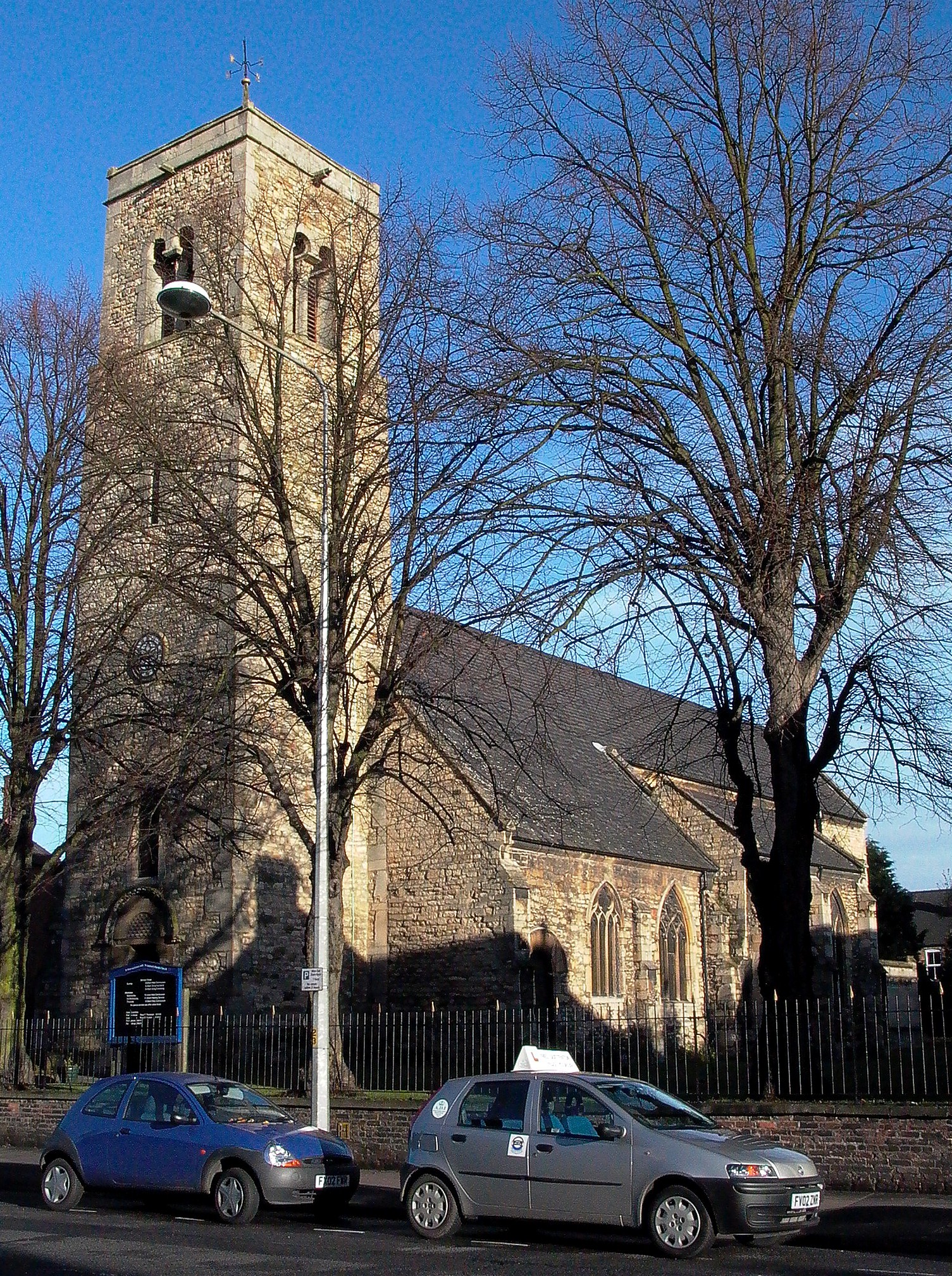
- St. Swithin, near Sheep market, was nearly destroyed by fire in 1644 and rebuilt in stone in 1801. It saw a period of neglect and it was taken down in 1884. The replacement was built on the Sheep square starting in 1870 and ending with its dedication in 1888.
- The church seats about 1,000.
- The church register, due to the fire, only dates back to 1685.
- Here is a photo of St. Swithin's Church, taken by (and copyright of) Wendy PARKINSON:
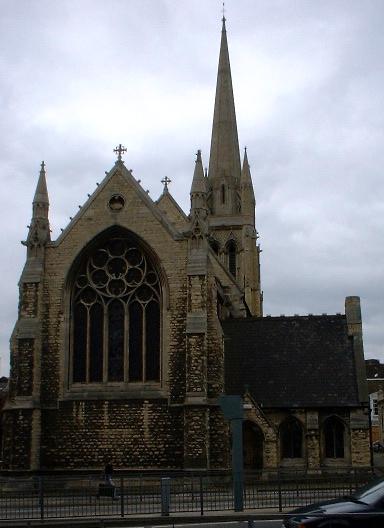
- Here is another photo of St. Swithin's Church, with the tower ungoing restoration and cleaning, taken by Ron COLE (who retains the copyright):
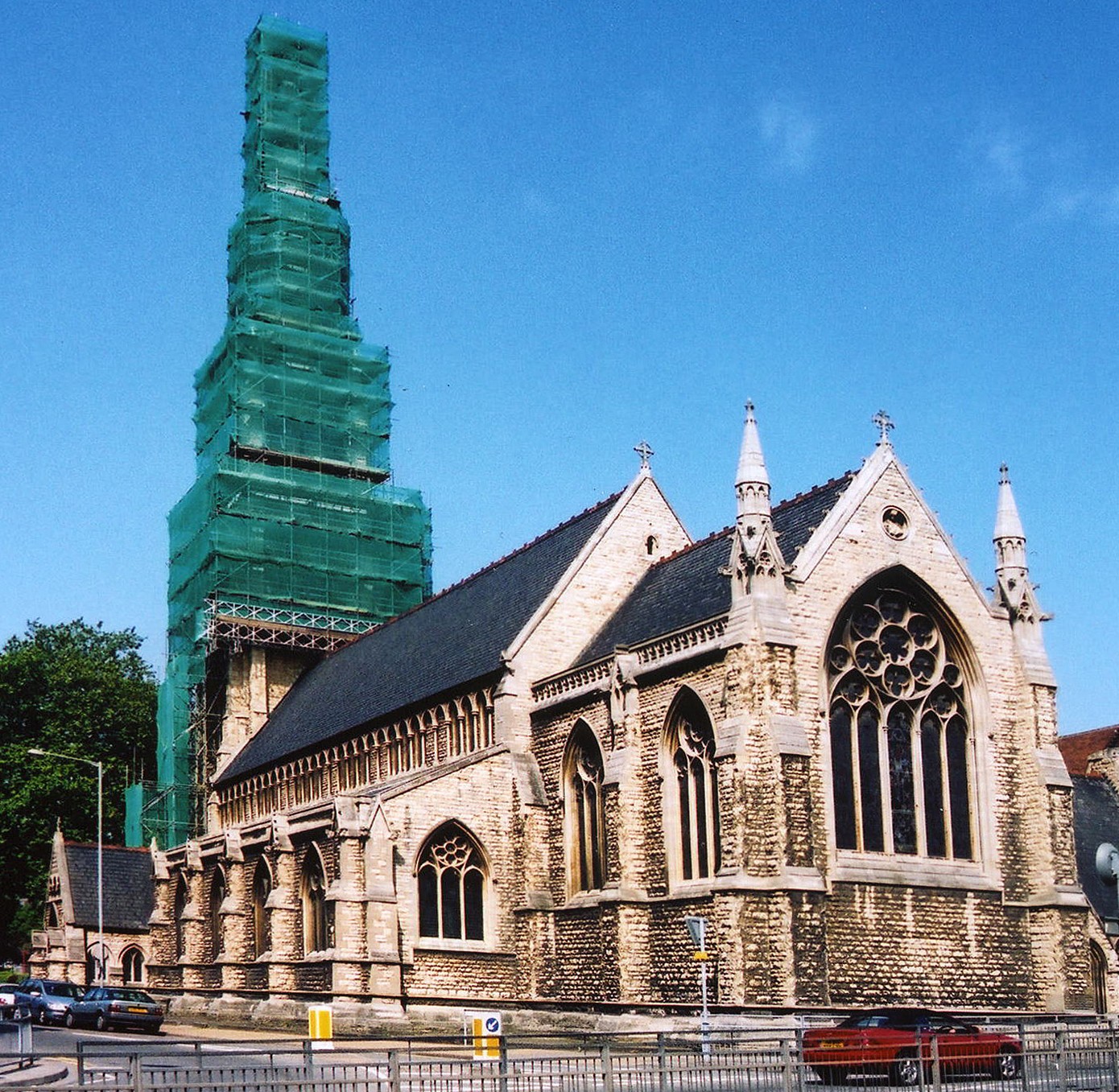
Non-conformist Churches
There are photographs of many of these churches on the Wendy PARKINSON Church Photos web site.
- The Alive Church, (formerly the "New Life Church") 22 Newland Street, considers itself a church with many locations. This appears to be an independent church in the Baptist tradition of Christianity. They have been in Lincoln for at least 30 years. They are aligned with Betel of Britain.
- General Baptist Church, St. Benedict's Square, was built in 1864.
- The church seats about 350.
- The Particular Baptist Chapel, Mint Lane, was built in 1871.
- The chapel seats about 600.
- St. Hugh, Monks Road. This Catholic church was erected in 1893 in place of the former chapel of St. John, Silver Street, now removed.
- The church seats 400 persons.
- Lincoln is within the Catholic diocese of Nottingham.
- Congregational Church, Newland, was built in 1876.
- The church seats about 1,100.
- Congregational Chapel, High Street, was built in 1819. It seats about 500. There were two associated mission chapels, one at a site called "Far Newland" and one at South Bar.
- Wesleyan Chapel, Clasket Gate, was erected in 1837 and a Sabbath School adjoining was rebuilt in 1870. It was popularly known as "Big Wesley" because it could seat 1,460. It closed in 1961, prior to demolition.
- Wesleyan Chapel, Bailgate, was built in 1880.
- The chapel seats 800.
- Here is a photo of Bailgate Chapel, taken by (and copyright of) Wendy PARKINSON:
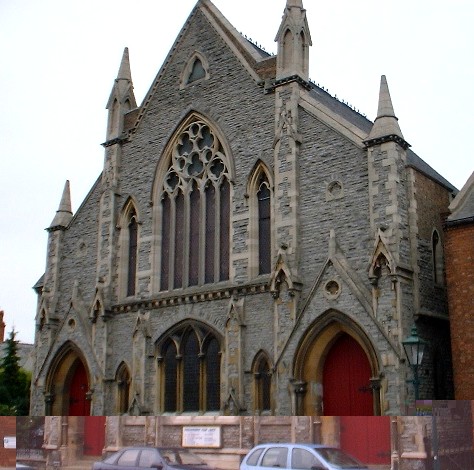
- The Hannah Memorial Wesleyan Chapel, High Street, was built in 1874 as a memorial to Dr. Hannah.
- The chapel seats 1,200.
- Wesleyan Chapel, Alfred Street, was built in 1864 and was converted to a day school prior to 1900.
- Wesleyan Chapel, St. Catherine's, was built in 1885. It seats about 650.
- Primitive Methodist Chapel, Bethel Place, was built in 1875. It seats about 800.
- Primitive Methodist Chapel, Rasen Lane, was built in 1863. It seats about 450.
- United Free Methodist Chapel, Silver Street, was built in 1864 and seats about 960.
- United Free Methodist Chapel, Saxon Street, was built in 1863 and seats about 500.
- Unitarian Chapel, High Street, was built before 1900 and seats about 120.
- For information and assistance in researching these chapels, see our non-conformist religions page. Non-conformist records can also be found at the Public Record Office.
